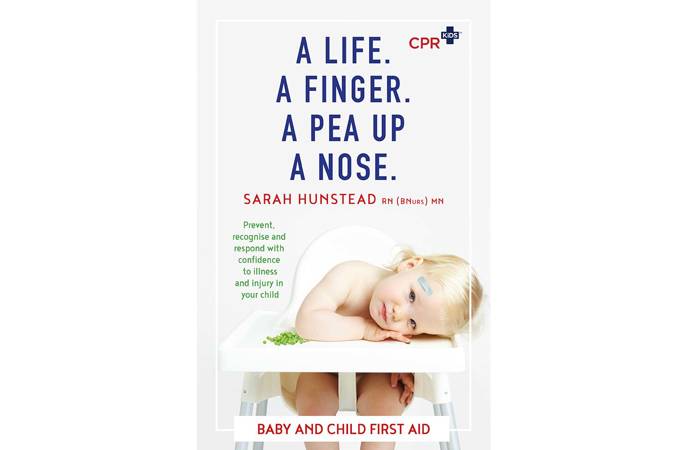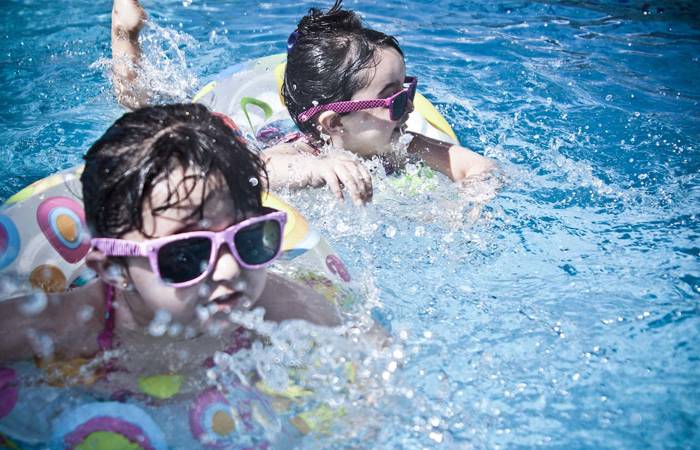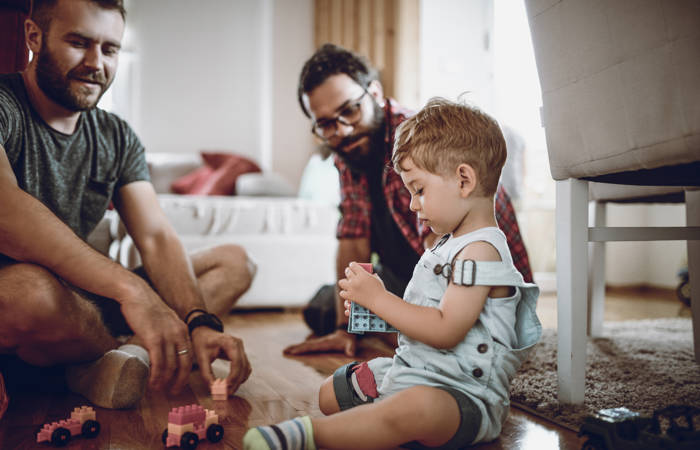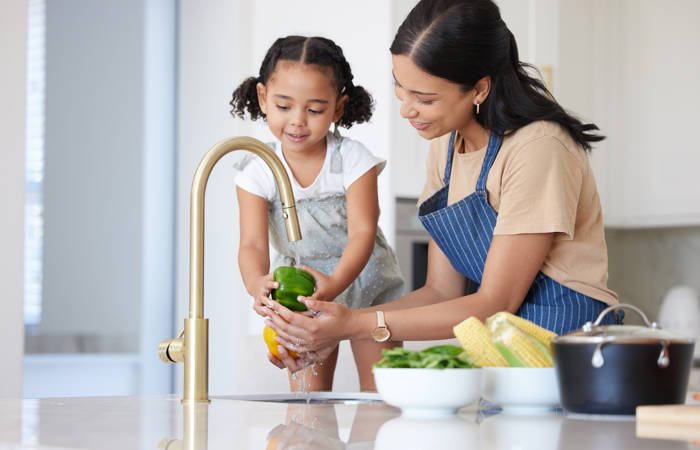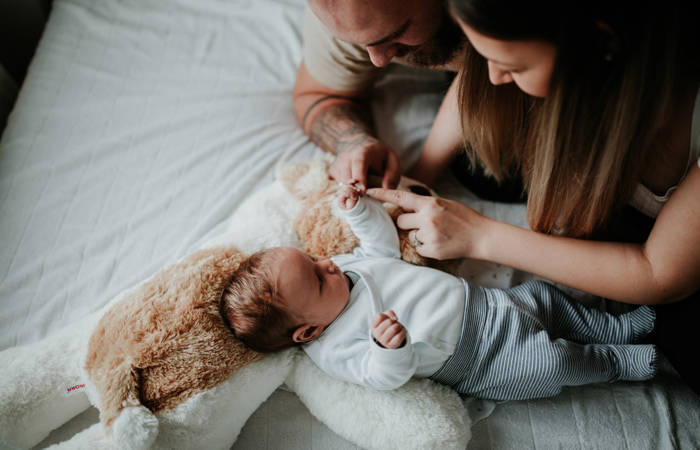Like what you see?
Sign up to receive more free parenting advice.
Thank you for subscribing to our newsletter!
Child Development
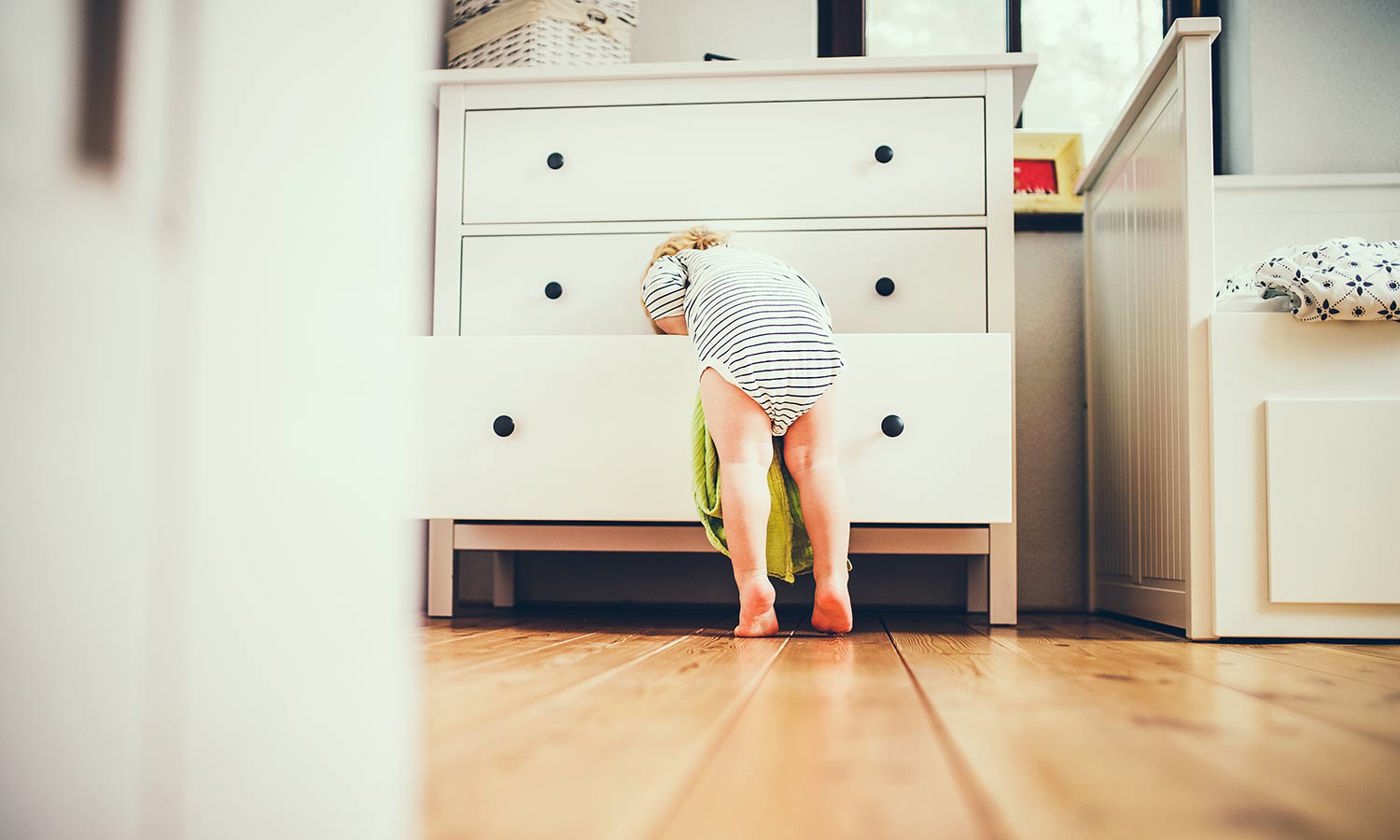
Credit: iStock.com/Halfpoint
Small in stature but big on their desire to explore: infants, toddlers and preschoolers need to be watched carefully around the home to keep them from harm. We spoke to two experts to provide some useful tips for keeping your children safe around the home.
Tip 1: Childproof for the next stage; not the stage they are at now.
Many accidents happen because parents simply didn’t realise a young child could reach or climb or move in a new way. From your child’s earliest days, childproof your home for their next stage so you’re not caught by surprise.
“We want children to be exploring, we just have to make their environment as safe as we can for them to explore and grow. It’s just a matter of thinking, what will come next,” says Susan Teerds, CEO of Kidsafe Queensland.
Tip 2: Get down to your child’s height
When safety proofing your home, it’s vital to have a child’s view on their surroundings.
“Before your baby comes home get down on the floor and look at things from their perspective,” Susan says.
Hazards can range from steps to power points to an old bobby pin hidden under the couch.
“You need to get down and have a think about what they can reach or touch. Think about which cords, table lamps or power points they can access,” Susan says.
Of course, what will be a hazard for a rolling or crawling baby will be different to that of a toddler, so this practice of getting down low should continue as your children age.
Consider if there are sharp corners that could prove dangerous for a toddler careening around the lounge room. Plus, have a think about whether your furniture is a temptation for climbing.
“To begin with, babies start to pull drawers open. We see them as drawers, but toddlers see them as ladders. Think about if they did sit in the drawer, will the whole set topple over on top of them?” Susan says, noting that best practice is to secure furniture from drawers to freestanding ovens to the wall.
We want children to be exploring, we just have to make their environment as safe as we can for them to explore and grow. It’s just a matter of thinking, what will come next.Susan Teerds
Stay up to date with the latest news and articles from First Five Years
Thank you for subscribing to our newsletter!
Tip 3: Watch the driveway
In Queensland alone, the emergency data from 2018 shows Queensland Children’s Hospital clinicians treated almost one child a month for serious injuries caused by being run over by a slow moving vehicle.
“Young children don’t have an innate sense of danger. Of course you should be teaching them that a moving car is dangerous, but there’s no guarantee they will act on that information reliably,” says Dr Bronwyn Griffin, a senior research fellow at the Child Research Centre at the Queensland University of Technology.
“For parents, the three “S”s are key for driveway safety: You need to supervise, separate and see,” Dr Griffin says.
Supervising a young child near a driveway goes even beyond the constant vigilance parents need to demonstrate around a swimming pool: it requires physical restraint.
“Don’t rely on small children to respond to your verbal prompts; there needs to be a physical restraint like a hand being held when a car is being moved,” Dr Griffin says.
Separate children from the area where cars are being moved.
“We recommend a physical barrier of some sort, and if your garage is attached to the house ensure the handle is high and the door is self closing,” Dr Griffin says.
Lastly, always ensure you can see all children when moving a vehicle in your driveway.
“Look around the car beforehand, including underneath, and if there’s no other adult there put your child in the car to move the vehicle,” Dr Griffin says.
Tip 4: Know how to treat burns
According to Kidsafe Queensland almost 80 per cent of serious burns and scalds to young children occur in the home.
“We see burns a lot in the emergency room, and most of the time they are avoidable,” Dr Griffin says.
Hot beverages are usually the main culprits, so keep tea and coffee far from a young child’s reach while it cools. Dr Griffin says hospital staff members also treat many children burned by oven doors or stovetops.
“We would deter parents from putting kids up on the bench to watch you cook,” she says.
Dr Griffin believes that just over 30 per cent of caregivers get burns first aid right. A serious burn should be put under cold running water for twenty minutes.
“It’s actually a really long time to keep a child under cold water: they don’t particularly like it so time it to ensure you make the full 20 minutes. It is so important for the outcome of the burn. It significantly decreases the depth of the burn and significantly speeds up the time it heals,” Dr Griffin says, pointing out that both these actions will reduce the risk of scarring, an issue that requires ongoing surgery as the child’s body grows but their scar doesn’t.
Tip 5: Get trained
Dr Griffin believes all parents should know CPR and the correct first aid for burns.
“First aid is vital for burns, and CPR has certainly saved a lot of children who have been submerged in water,” Dr Griffin says.
Top Safety Tips
- Stay one step ahead: think about what your baby or toddler will be able to reach or do next and prepare your home for that.
- With babies and toddlers, close all doors to rooms you are not using and ensure your child can’t open the handle. Be particularly vigilant about this if the door opens into a garage attached to the house.
- The base of a 1.25 drink bottle is hard for young children to grip and can be placed over round door handles so they can’t get into unsupervised areas. Throw away the screw top (a choking hazard) and cut a cross across the middle of the bottle, then wedge it over the handle. Although most little hands can’t grip the result, adults will hear the noise of the plastic if they try.
- Keep cleaning products and medicines out of reach: this should include beauty products like shampoo.
- Check if your local fire and rescue service has a program to come and test smoke alarms. (In Queensland this is available and is free.)
- Kidsafe Australia has a useful home safety guide.


